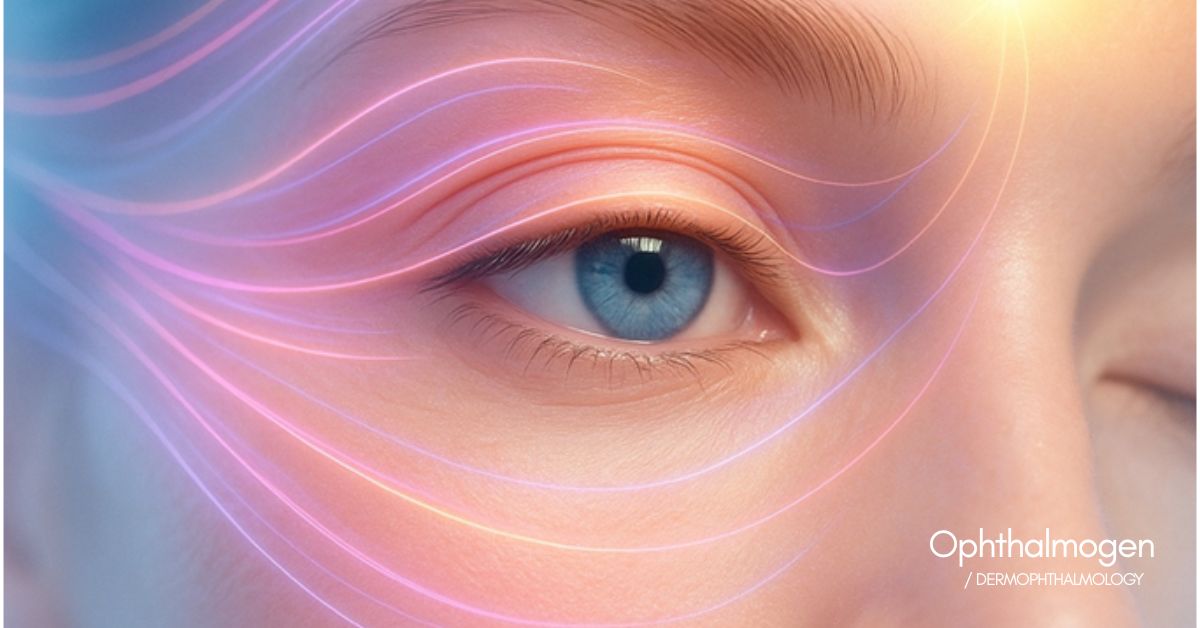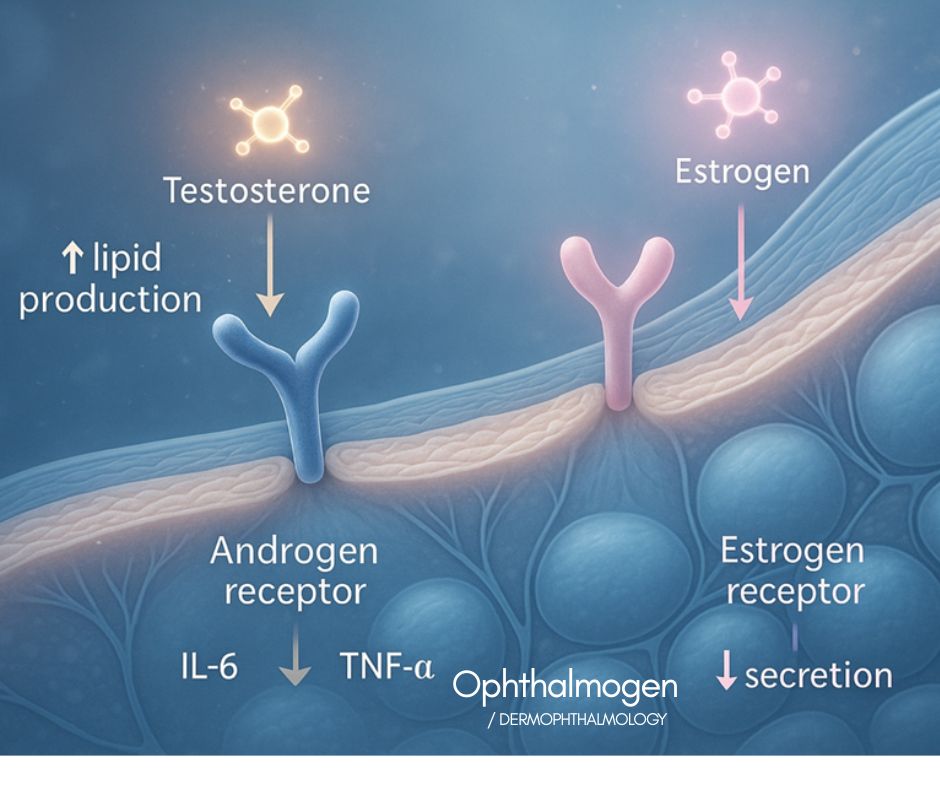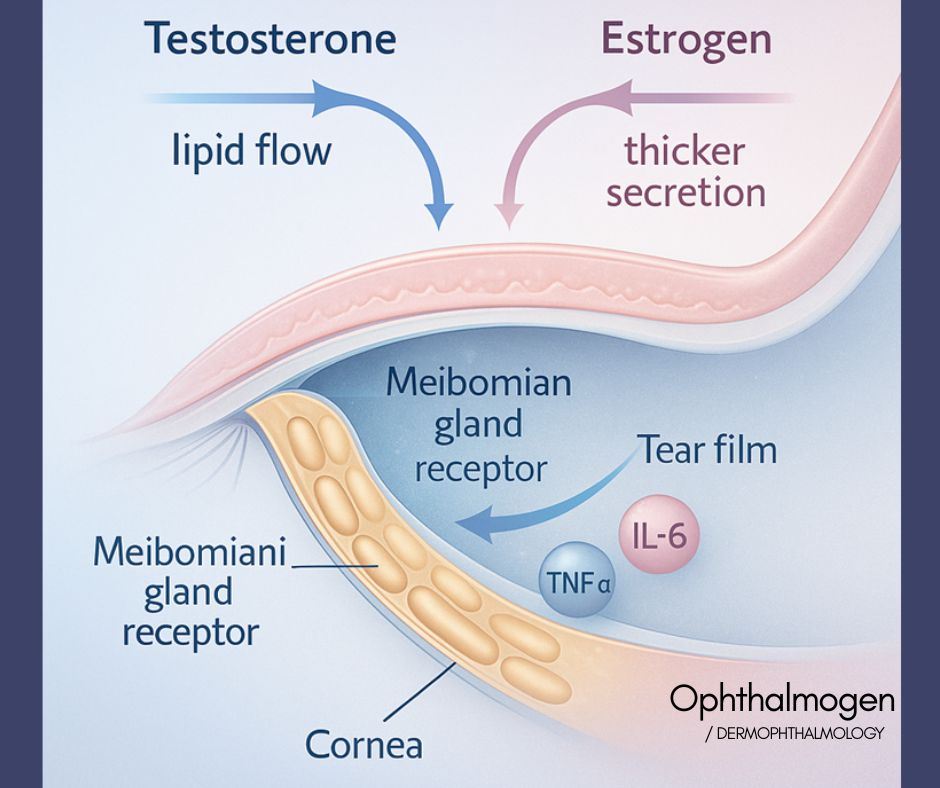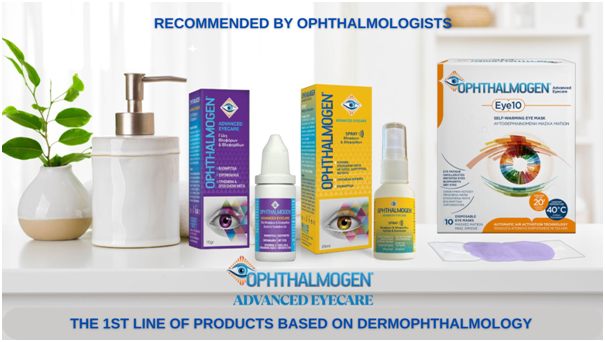
How hormonal fluctuations influence eyelid health and Meibomian gland function.
Since ancient times, Greek physicians — from Hippocrates to Galen — associated the balance of the body’s internal “humors” with the health of the skin and eyes.
Today, this timeless wisdom is reborn through Dermophthalmology, which shows that hormonal changes directly affect the function of the Meibomian glands and the likelihood of developing a chalazion.
Historical Note
Hormones and the Meibomian Glands

The Meibomian glands are androgen-dependent, meaning their function is regulated by hormones such as testosterone and estrogen.
Androgens
• Increase lipid production and maintain meibum fluidity.
• Decreased levels (e.g., in menopause or after hormonal therapy) lead to thicker secretions and gland obstruction.
Estrogens
• Affect epithelial health and lipid balance.
• Their decline after age 40 is linked to dryness, inflammation, and chalazion formation.
Clinical Evidence

The Holistic Perspective – From Puberty to Menopause
Dermophthalmology proposes a multidisciplinary framework that integrates:
•Ophthalmology – Meibomian gland function
•Dermatology – Sebaceous secretion and skin pH
•Endocrinology – Hormonal cycles and balance
•Nutrition Science – Omega-3s, lignans, and antioxidants
Supporting Hormonal Balance Naturally
- Diet rich in omega-3s (flaxseed, walnuts, fish)
- Phytoestrogens (lignans, soy, resveratrol)
- Reduced caffeine and alcohol
- Adequate sleep and physical activity

Dermophthalmologic Protocol
1 Ophthalmogen EYE10 → Heat at 40 °C for 20 min (decongestion & lipid flow stimulation)
2 Ophthalmogen Gel → Gentle massage for 30 s to enhance microcirculation & local hormonal response
3 Ophthalmogen Spray with Tea Tree Oil → Microbial balance & restoration of skin barrier
Key Studies
•Sullivan et al., Invest. Ophthalmol. Vis. Sci., 2017 – “Androgen regulation of Meibomian gland function.”
•Arita et al., Br. J. Ophthalmol., 2020 – “Changes in Meibomian gland morphology and hormone levels across menopause.”
•Eperjesi et al., Optometry & Vision Science, 2021 – “Impact of hormonal changes on ocular surface and tear film stability.”
•Papageorgiou et al., University of Athens, 2023 – “Hormonal fluctuations and blepharitis: a dermophthalmologic perspective.”
Conclusion
Hormonal balance is a cornerstone of ocular surface health.
From puberty to menopause, the eyelid mirrors the body’s internal endocrine rhythm.
Dermophthalmology views chalazion not as a local pathology, but as a signal of systemic harmony or imbalance.

Discover the full Ophthalmogen range at www.ophthalmogen.com and Dermophthalmology at www.Dermophthalmology.com
Give your eyes the care and beauty they deserve.






